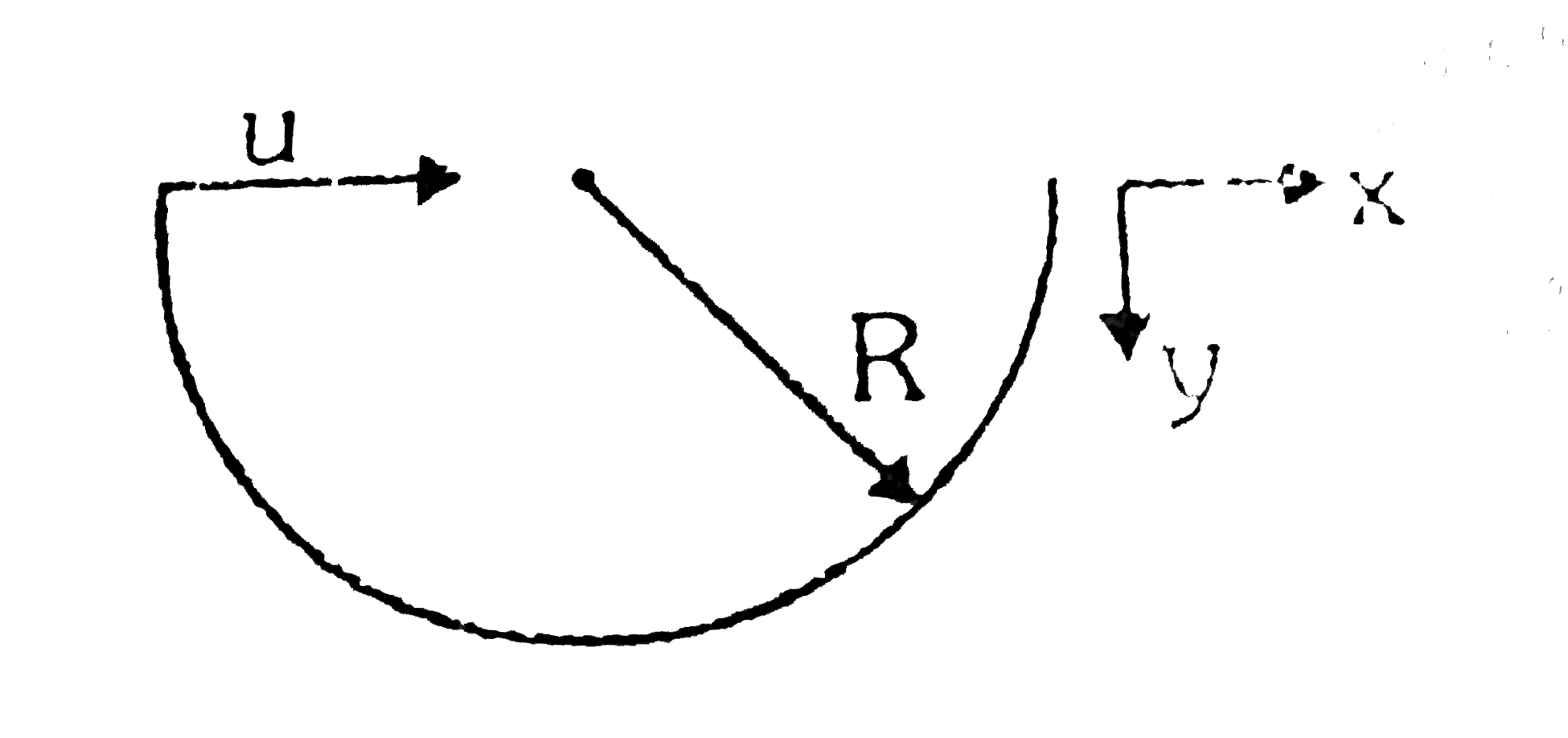A particle is projected horizontally from the top of a tower with a velocity v0. If v be its velocity at any instant, then the radius of curvature of the path of the particle at that instant is directely proportional to
v3
v2
v
1/v
The correct Answer is:A
To solve the problem, we need to determine how the radius of curvature (r) of the path of a particle projected horizontally from the top of a tower is related to its velocity (v) at any instant.
1. Understanding the Motion:
The particle is projected horizontally with an initial velocity v0 from the top of a tower. As it falls, it undergoes projectile motion, which consists of horizontal motion with constant velocity and vertical motion under the influence of gravity.
2. Identifying Forces:
At any instant, the forces acting on the particle are:
- The gravitational force mg acting downwards.
- The horizontal component of the velocity v0 (which remains constant) and the vertical component of the velocity vy which increases due to gravity.
3. Velocity at Any Instant:
The total velocity v of the particle at any instant can be expressed as:
v=√v20+v2y
where vy=gt is the vertical velocity component after time t.
4. Centripetal Force and Radius of Curvature:
The radius of curvature r of the path at any point can be derived from the centripetal force equation:
Fc=mv2r
The only force providing centripetal acceleration in this case is the weight of the particle, which is mg. Therefore, we can set:
mg=mv2r
5. Solving for Radius of Curvature:
Rearranging the equation gives us:
r=v2g
Here, g is the acceleration due to gravity, which is a constant.
6. Direct Proportionality:
From the equation r=v2g, we can see that the radius of curvature r is directly proportional to the square of the velocity v:
r∝v2
Conclusion:
Thus, the radius of curvature of the path of the particle at any instant is directly proportional to v2.
The particle is projected horizontally with an initial velocity v0 from the top of a tower. As it falls, it undergoes projectile motion, which consists of horizontal motion with constant velocity and vertical motion under the influence of gravity.
At any instant, the forces acting on the particle are:
- The gravitational force mg acting downwards.
- The horizontal component of the velocity v0 (which remains constant) and the vertical component of the velocity vy which increases due to gravity.
The total velocity v of the particle at any instant can be expressed as:
v=√v20+v2y
where vy=gt is the vertical velocity component after time t.
The radius of curvature r of the path at any point can be derived from the centripetal force equation:
Fc=mv2r
The only force providing centripetal acceleration in this case is the weight of the particle, which is mg. Therefore, we can set:
mg=mv2r
Rearranging the equation gives us:
r=v2g
Here, g is the acceleration due to gravity, which is a constant.
From the equation r=v2g, we can see that the radius of curvature r is directly proportional to the square of the velocity v:
r∝v2
Thus, the radius of curvature of the path of the particle at any instant is directly proportional to v2.
Topper's Solved these Questions
Similar Questions
A ball is projected horizontal from the top of a tower with a velocity v0. It will be moving at an angle of 60∘ with the horizontal after time.
View SolutionA particle is projected with a velocity ¯v=aˆi+bˆj . Find the radius of curvature of the trajectory of the particle at (i) point of projection (ii) highest point .
View SolutionA particle moves with initial velocity v0 and retardation αv, where v is velocity at any instant t. Then the particle
View SolutionA particle is projected horizontally as shown from the rim of a large hemispherical bowl. The displacement of the particle when it strikes the bowl the first time is R. Find the velocity of the particle at that instant and the time taken.
 View Solution
View SolutionA particle is projected vertically up from the top of a tower with velocity 10m/s. It reaches the ground in 5s. Find -
(a) Height of tower
(b) Striking velocity of particle at ground
(c ) Distance traversed by particle.
(d) Average speed & average velocity of particle.View SolutionA particle is projected from the ground at an angle of 60∘ with the horizontal with a speed by 20 m/s. The radius of curvature of the path of the particle, when its velocity makes an angle of 30∘ with horizontal is 809.√xm Find x .
View SolutionA particle is projected at t=0 with velocity u at angle θ with the horizontal. Then the ratio of the tangential acceleration and the radius of curvature at the point of projection is :
View SolutionA particle is projected horizontally will speed 20ms−1 from the top of a tower. After what time velocity of particle will be at 45∘ angle from initial direction of projection.
View SolutionA heavy particle is projected from a point on the horizontal at an angle 60∘ with the horizontal with a speed of 10m/s. Then the radius of the curvature of its path at the instant of crossing the same horizontal is ……………………...
View SolutionA heavy particle is projected from a point on the horizontal at an angle 60∘ with the horizontal with a speed of 10m/s. Then the radius of the curvature of its path at the instant of crossing the same horizontal is ……………………...
View Solution

